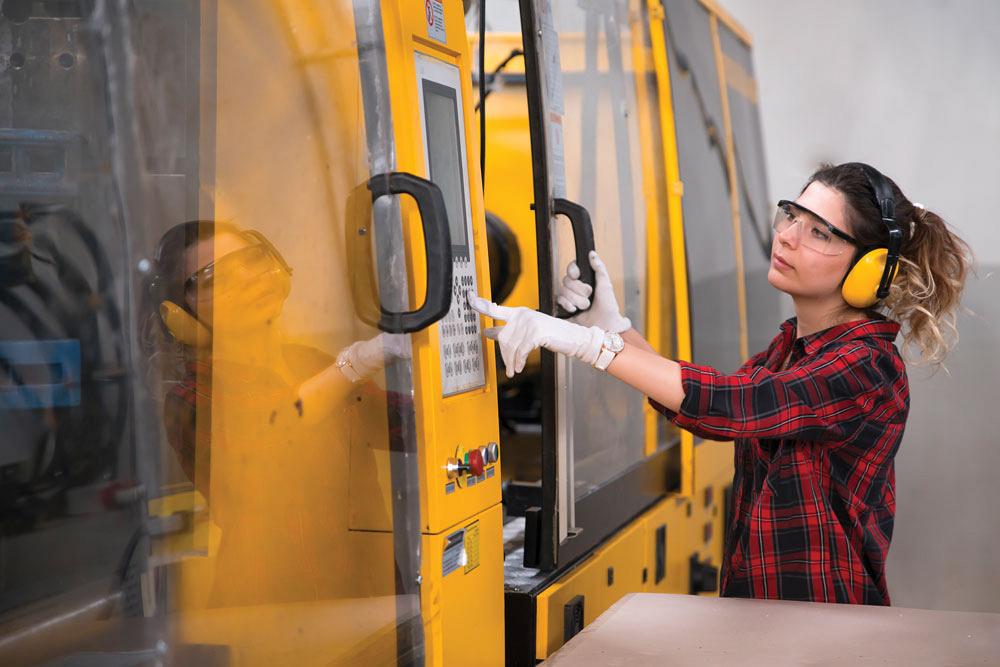Associate Editor
- FMA
- The Fabricator
- FABTECH
- Canadian Metalworking
Closing the gender gap
A shift is needed in how manufacturers attract and retain women in the workforce
- By Lindsay Luminoso
- August 24, 2020
- Article
- Metalworking
According to Women and Gender Equality Canada, women account for only 28 per cent of the manufacturing sector workforce despite a labour shortage of over 41,000 jobs. This number varies only slightly regionally. The provinces where women account for a larger proportion of the workforce in manufacturing include Prince Edward Island (31 per cent), Ontario (30 per cent), and Quebec (28 per cent). The provinces with the lowest proportions include Saskatchewan (20 per cent), Alberta (24 per cent), and Nova Scotia (24 per cent).
Why is there such a gender disparity? This is the question that the federal and provincial governments, industry, educational institutions, not-for-profit organizations, and shop owners have been grappling with over the past decade.
"Evidence suggests that things haven’t got better in terms of recruitment and retention of women in manufacturing," said Dr. Brendan Sweeney, managing director, Trillium Network for Advanced Manufacturing, London, Ont. "It may not necessarily be getting worse, but we are certainly not seeing any significant growth since the jump we saw in the 1990s. During that time there were significant openings in manufacturing jobs but that also correlated with a big increase in wages in the sector. Some big labour unions made a concerted effort to improve gender hiring and increasing the number of female employees in manufacturing. Since then there hasn’t been the same systemic effort made."
The data also suggests that the segments and occupations within manufacturing that have a higher-than-average proportion of female employees also tend to be lower-paid, said Sweeney. For example, women are less likely to work in aerospace or as engineers, but more likely to work in meat processing and in entry-level production positions. These lower-paying jobs are also the first to be cut in an economic downturn. In general, women tend to find better opportunities elsewhere, often at more accessible locations, with higher wages, and a more balanced work-family life.
In the last 10 years shops have had a particularly difficult time finding workers, from both a quantity and quality perspective. But Sweeney points out that if these jobs are only geared toward attracting and retaining 50 per cent of the population, then this problem will continue to exist.
Streaming the Pipeline
Recently Trillium Network partnered with Build a Dream to explore the gender gap in manufacturing and create a framework of best practices to help shops bring and keep more women in the industry.
"In speaking to young women, doing surveys, and setting up focus groups, we found that there were still a number of barriers that limited young women’s interest and knowledge of these career pathways," said Nour Hachem-Fawaz, president and founder, Build a Dream, Windsor, Ont. "The primary reason seemed to be that they were not encouraged to pursue the skilled trades and certain STEM occupations. And from there, we realized that parents were the key influencers when it came to decisions young women were making."
This is part of the reason that Hachem-Fawaz launched her organization. She saw a need for programs and initiatives that brought together industry, educators, and young women. Over the years the organization has grown and expanded across Ontario and some communities in Alberta and British Columbia.
"There needs to be intentional and focused efforts in not only attracting but recruiting and retaining women into the industry," said Hachem-Fawaz. "We can’t assume it’s going to just happen. It needs to be a collective effort. I often recommend that companies partner with organizations like Build a Dream or Women’s Enterprise Skills Training of Windsor [WEST] and their local colleges to help build that pipeline."
WEST has been helping women gain the necessary training and skills to succeed in the manufacturing sector since the late 1980s. This organization has created programs designed to help women find that path to improving their lives by providing different types of education opportunities and skilled trades training.
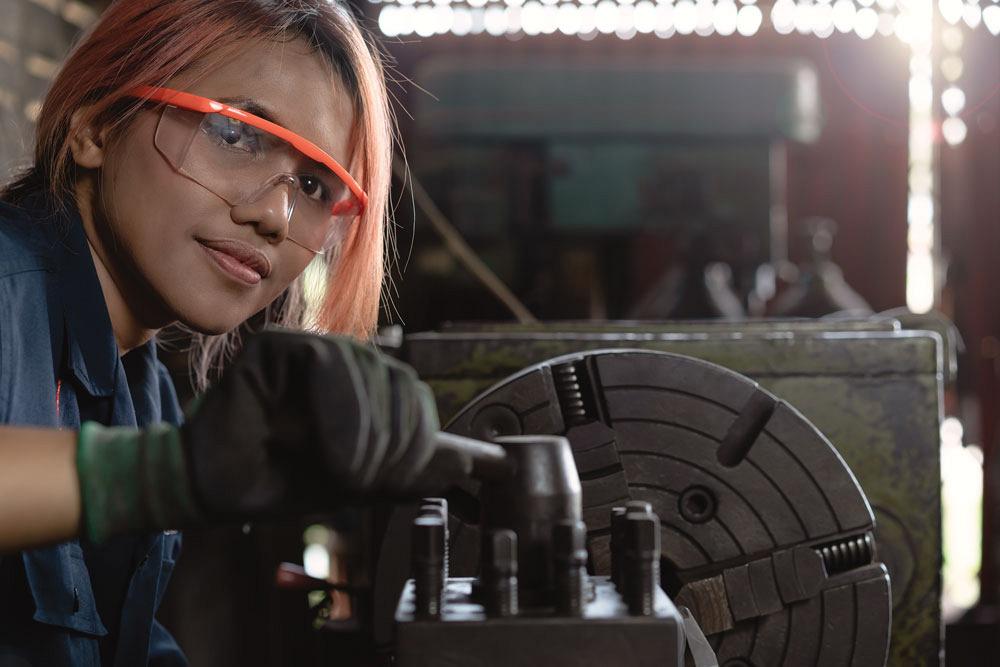
Women make up only 28 per cent of the workforce in manufacturing, and yet there is a huge labour shortage. Intentional and focused efforts are needed not only to attract but to recruit and retain women in the industry.
The organization offers a 42-week CNC Industrial Mechanic Millwright Pre-Apprenticeship Certificate Program in conjunction with Unifor and St. Clair College. The program is designed to facilitate the entry of women without prior experience and knowledge into the millwright and machining trade. It provides applicants with cross-training in a number of different areas within the sector, including electronics, robotics, electrical, machining, hoisting, rigging, and many other areas that are important for workers’ success in entry-level positions.
"This is a program that applicants need to be serious about and put in the effort," said Lyn Caine, program lead job developer and employment counselor at WEST, Windsor, Ont. "The beauty of something like this is that we are able to remove as many external barriers that women may face to getting into manufacturing. It’s free, and we are able to pay for courses, books, transportation, child care, and even health-care benefits. It’s about giving women the knowledge and confidence to apply for jobs within this sector. They have to want it and put the work in, but we try to provide applicants with skills to succeed."
WEST of Windsor has had success helping women gain the necessary training and skills to succeed in the manufacturing sector since 2014.
“Almost 75 per cent of the 130 women of the women we've trained have secured work in the skilled trades and with it, greater economic power," said Caine.
Organizations like Build a Dream and WEST are helping to get more women interested and skilled to work in manufacturing, but some additional barriers still exist that exacerbate the gender gap.
Hiring Practices
The experts agree that there needs to be an honest conversation and audit of how shops hire and retain employees and operate on a day-to-day basis. Only when companies reflect on this and begin to measure their failures and successes will this trend ever begin to change.
"‘I don’t get any female applicants, but if I did, I would certainly consider hiring one.’ This is one of the biggest things I hear from companies," said Hachem-Fawaz. "When I speak to women across all those different sectors, there’s still this cultural perception or cultural bias against women in areas that have systematically been centred and have policies that reflect a male-dominated workforce. If shops don’t begin to really look at their internal culture, as it comes to diversity and inclusion, then that pipeline is still going to be very limited."
Studies show that, for the most part, women are choosing family-friendly careers, particularly ones that offer comfort and security. Women want to know that if they go on maternity leave that they will be able to return to their jobs without fear of penalty. They also look for jobs with the potential for growth opportunities and where members of the workforce are treated with respect.
If male-dominated industries are not communicating these job qualities, they simply are not communicating to female applicants. Language matters. And this is particularly true when it comes to job postings—women often look at job qualifications differently than men.
"Women will look at a job posting and generally only apply if they have nine out of the 10 qualifications," said Hachem-Fawaz. "We also know that men will look at that same posting and apply even if they only have four out of the 10 qualifications. Men tend to be more confident in their abilities. When companies are posting for a position, they could remove some of the qualifications or make them more open for a woman to access. That is not to say that requirements and qualifications should be adjusted, but wording matters in attracting more women."
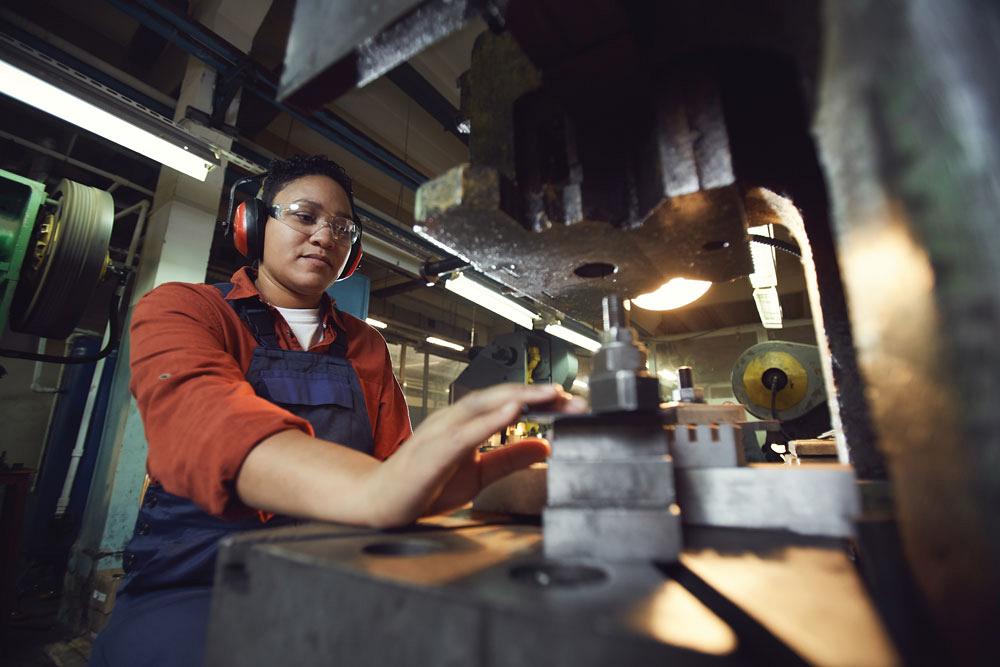
Organizations like Build a Dream and WEST are helping to get more women interested and trained to work in manufacturing, but some barriers exist that exacerbate the gender gap.
If companies have a referral program, workers naturally will refer within their network, and they’re going to refer someone who they feel would be a great candidate; and with that comes a level of unconscious bias. They tend to recommend more males because if the majority of the workforce is male, that’s who they see in that role.
"One of the things that I think we’re starting to see and hear more of is that a lot of younger workers, particularly in male-dominated industries, want their employer and workforce to resemble their world view and share the same values," said Sweeney. "For a lot of younger men walking into a workplace where there’s very few women, this is a recipe for poor retention because their world is 50 per cent women. So hopefully this will change the culture as companies push to incorporate more women on the shop floor."
Change-Making
Getting women interested in manufacturing and having them apply for positions is only half of the battle. For companies that have hired and retained only men on the shop floor, there may be some hesitation in making sweeping changes that help make the workplace a more inclusive environment.
"It becomes an issue of having the necessary female facilities, policies that are family-oriented, and programs to combat sexual harassment in the workplace," said Hachem-Fawaz. "There still is some discomfort with adapting to diversity in the workplace. Companies need to create more inclusive policies and practices when it comes to not only attracting but recruiting, retaining, and advancing women in the industry,"
Sweeney noted that many companies are on the right track and have adopted best practices to make the workforce more inclusive. But in order to do this effectively, shops need to do a deep dive into the evolution of their culture over the years to measure what that looks like and how that has changed.
"There are so many layers to this challenge that it’s hard to pinpoint any one thing that we need to change," said Sweeney. "There are some really easy steps that shops can take to help alleviate some of the pain points. Most plants that I’ve been in are pretty good, but I’ve been in plants with pinup calendars still hung up and yet they complain that they can’t find people to work there. Well, they can’t complain anymore. That should not be there, it’s not 1970."
Sweeney recommends that shop management walk through the floor and remove anything that might make the work environment less inviting—it’s just that easy. However, bigger challenges like not having proper changing or washroom facilities may require more planning. If manufacturers agree that the lack of women in the workforce is a problem that needs to be addressed, the big question is whether they are willing to put more effort into recruiting and retaining women.
The partnership between Trillium and Build a Dream is working toward creating a framework that will help manufacturers adopt some of the best practices and plans from real-world case studies. The partnership will look at what does and doesn’t work when it comes to diversifying hiring and attracting more women to manufacturing. The framework is set to be available in October 2020.
Finding Support
Women also need to support other women and advocate for themselves. Finding an organization like WEST or a group dedicated to assisting women break into the industry is a good place to start.
"About 10 years ago I started volunteering at North Forge Fabrication Lab," said Marney Stapley, vice-president, North Forge Technology Exchange, Winnipeg. "They had metalworking, welding, fabricating, laser cutting, CNC machines, and so many other areas that I was really interested in. Five years into the volunteer position, I knew the president and heard he was looking to develop a new director position. So, I reached out and told him that I thought he needed a woman to run the lab and that I was ideal for the job."
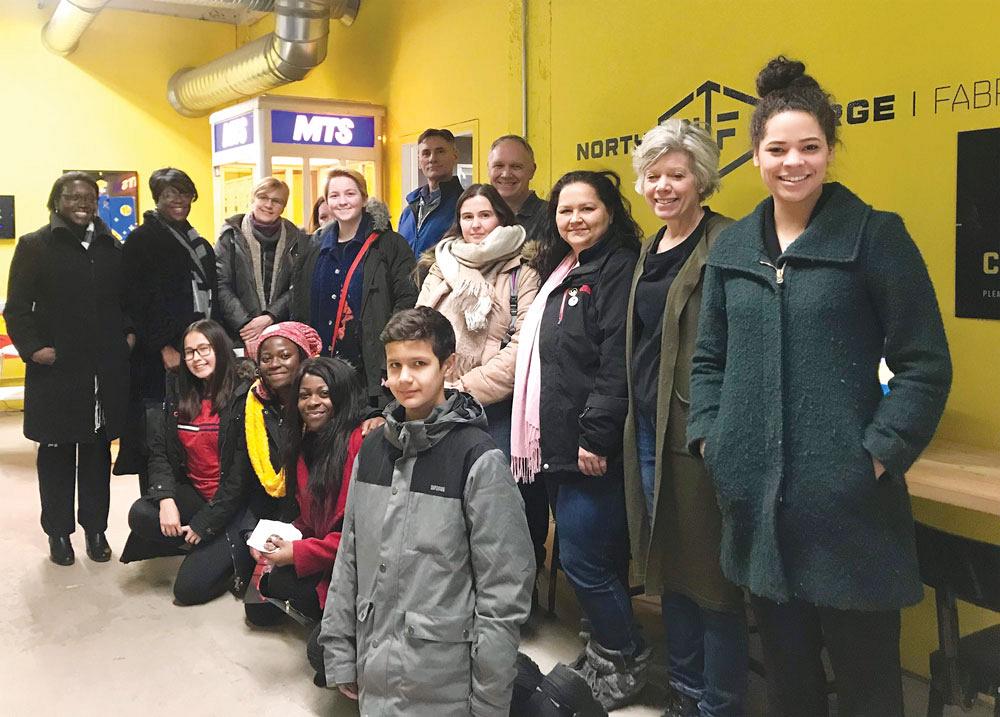
Finding a mentor or group with insights into the industry can help others get started on this career path. Women in 3D printing, similarly to WEST, offers a community of support so that women don’t have to do it alone. Photo courtesy of Women in 3D Printing.
After Stapley took on the position, she worked to promote bringing more women into the fabrication lab. One way she did this was by conducting open houses and tours. She noticed that many women seemed really interested in getting involved but that never translated into anything. Stapley believed that this was because many of the women felt intimidated by the job and the predominantly male workforce.
So she really thought about how she could change the culture, which is how she ended up launching the first Canadian Chapter of Women in 3D Printing located in Winnipeg. Today the organization has branches in Vancouver and Toronto.
"At first I wondered why we needed an organization like that that focuses only on women, and then I realized it’s a space for women who feel intimidated to get involved or who need a bit of support from other women on how they can get involved. Our goal is to increase the visibility of women in that industry and encourage more women to use 3D printing technologies."
The group has monthly meetings that give women who are interested in additive manufacturing information and access to key players in the industry through presentations and networking events.
Finding a mentor or group with insights into the industry can really help others get started on this career path. Women in 3D Printing, similarly to WEST, offers a community of support so that women don’t have to do it alone.
"We’ve seen a huge success of women, from all different backgrounds, who have gone through our program," said Caine. "We often find them coming back to us and trying to give back to others that are just starting out. Hearing from women who have succeeded in this program and the manufacturing industry as a whole makes a huge difference."
Increasing the number of women in manufacturing will require addressing the cultural and organizational barriers to their entry, retention, and advancement from within. Government, the education sector, industry, and stakeholders all need to come together to alleviate the labour shortage. There are a number of reasons more women should pursue a career in manufacturing, one of them being higher wages. Statistics Canada’s research shows women’s underrepresentation in manufacturing, as well as construction and mining, contributes to driving the gender wage gap. Manufacturing provides good, middle-class jobs that could be filled by encouraging more women to work in the sector.
According to Women and Gender Equality Canada, numerous exciting opportunities are emerging, and women’s ideas, experiences, and talent need to be part of the way forward.
Finding the Right Fit
The manufacturing sector has struggled to attract and retain women in the workforce over the last decade. Beyond the traditional barriers, one area in need of significant improvement is workwear and personal protective equipment (PPE).
"After many years of complaining to my friends and listening to my female co-workers struggle to find proper safety shoes that fit, I decided to fix the problem myself," said Anastasia Kraft, founder and CEO, Xena Workwear, Milwaukee, Wis. "I developed safety shoes that properly fit women’s feet and will help them feel confident in any work environment. It’s already difficult for women to fit into this male-dominated environment, so finding proper workwear is an unnecessary problem."
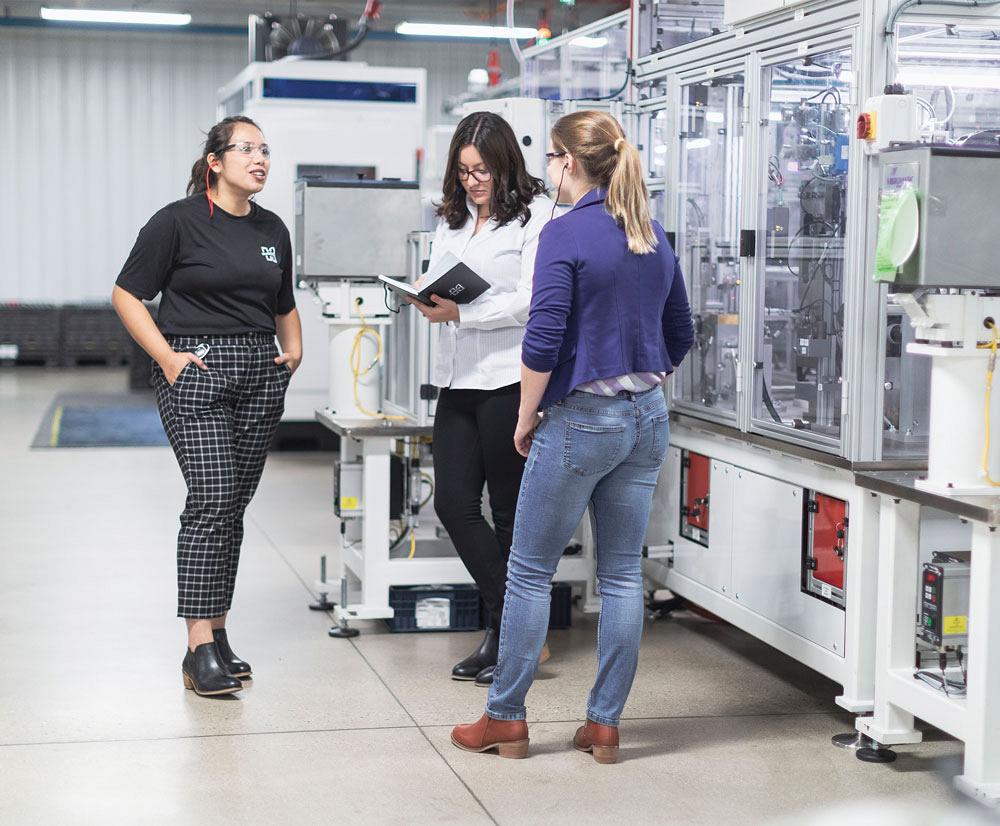
"My hope is that by strengthening the community of female leaders in manufacturing, we will inspire more girls to enter these fields,” said Kraft. Photo courtesy of Xena Workwear.
Kraft’s background is in international project engineering, and when she first moved to the U.S. from Germany, she never expected to wind up in footwear manufacturing.
"The company was founded out of my own frustration working in a manufacturing company. I had to dress professionally, but it was just impossible with the conventional clunky boots designed for men," she said.
The problem goes well beyond safety shoes to all workwear and PPE. These items are just not designed or geared toward women and may be a factor in why women have such low retention rates in this sector. But the question that many companies ask themselves is whether there is a big enough market to develop and support PPE and workwear designed for women. Kraft believes there is.
"We are always going to struggle to bring women into manufacturing if we aren’t listening to their needs," she said. "And what women wear has such a huge impact on their confidence, performance, and long-term career success. We want to listen to the needs of women who are working in demanding fields. My hope is that by strengthening the community of female leaders in manufacturing, we will inspire more girls to enter these fields."
The company has launched a line of safety shoes but hopes to add new product lines in the near future, particularly functional blazers. As the company grows to meet the day-to-day workwear needs of women in manufacturing, Kraft plans to support organizations that inspire girls to explore manufacturing as a career path.
"Women have to be bold and more confident in our ability to succeed in these industries," she said. "We can do anything; we just need the confidence to try."
Untapping Potential
According to a government of Canada-funded Canadian Manufacturers & Exporters (CME) report, "Untapped Potential: Attracting and Engaging Women in Canadian Manufacturing," action is needed in five areas to increase the number of women in manufacturing:
- More female role models are needed to inspire and encourage young women.
- Access to modern manufacturing facilities to help change the perception of manufacturing.
- More efforts to encourage young girls to pursue an education in STEM and/or the skilled trades.
- Businesses need to adopt more inclusive workplaces.
- Businesses need to find creative ways to improve work-life balance for employees.
Associate Editor Lindsay Luminoso can be reached at lluminoso@canadianmetalworking.com.
Build a Dream, www.webuildadream.com

Shops need to do a deep dive into the evolution of their culture over the years to measure what that looks like and how that has changed.
Canadian Manufacturers & Exporters, cme-mec.ca
Trillium Network for Advanced Manufacturing, trilliummfg.ca
Women and Gender Equality Canada, cfc-swc.gc.ca
Women in 3D Printing, womenin3dprinting.com
Women’s Enterprise Skills Training of Windsor Inc., www.westofwindsor.com
Xena Workwear, xenaworkwear.com
About the Author

Lindsay Luminoso
1154 Warden Avenue
Toronto, M1R 0A1 Canada
Lindsay Luminoso, associate editor, contributes to both Canadian Metalworking and Canadian Fabricating & Welding. She worked as an associate editor/web editor, at Canadian Metalworking from 2014-2016 and was most recently an associate editor at Design Engineering.
Luminoso has a bachelor of arts from Carleton University, a bachelor of education from Ottawa University, and a graduate certificate in book, magazine, and digital publishing from Centennial College.
subscribe now


Keep up to date with the latest news, events, and technology for all things metal from our pair of monthly magazines written specifically for Canadian manufacturers!
Start Your Free Subscription- Industry Events
MME Winnipeg
- April 30, 2024
- Winnipeg, ON Canada
CTMA Economic Uncertainty: Helping You Navigate Windsor Seminar
- April 30, 2024
- Windsor, ON Canada
CTMA Economic Uncertainty: Helping You Navigate Kitchener Seminar
- May 2, 2024
- Kitchener, ON Canada
Automate 2024
- May 6 - 9, 2024
- Chicago, IL
ANCA Open House
- May 7 - 8, 2024
- Wixom, MI













